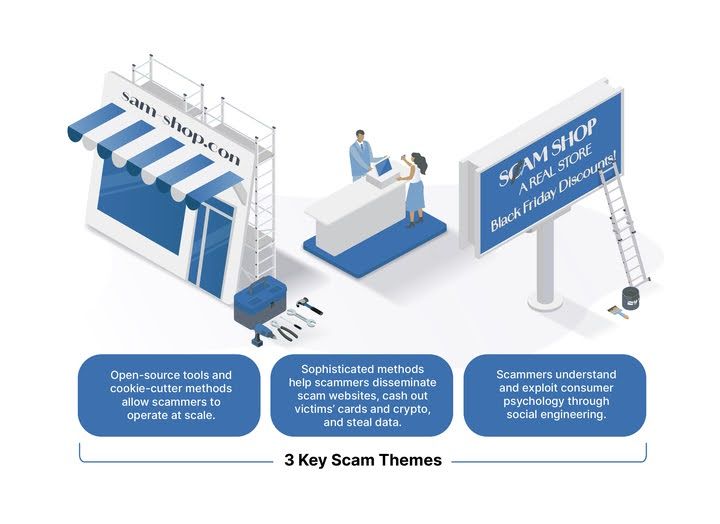As Black Friday and the holiday shopping season approaches, the threat of online scams is on the rise, with a 22% increase in consumer scam losses reported during the 2022 Black Friday and Cyber Monday sales. Recorded Futures Insikt Group has analyzed recent high-impact scam website campaigns, revealing three key themes in how scammers operate and offering insights into how consumers and businesses can protect themselves.
Online shopping scams pose significant financial fraud risks, with reported US losses ranging from $8.8 billion to $10.3 billion in 2022. These scams not only impact consumers but also pose risks to financial institutions, payment processors, and digital retailers, eroding consumer trust and potentially leading to brand impairment. A 2023 study found that 19% of shoppers abandoned their carts due to concerns about the security of payment card data on websites.

Insikt Groups analysis of scam website campaigns revealed three key themes in how scammers establish and operate scam websites, why they use these tactics, and what these themes mean for victims and businesses (Source: Recorded Future)
Scam website campaigns rely on social engineering and scale for success, making identification, analysis, and customer awareness crucial for prevention. Businesses are advised to solicit scam website leads from customers as a foundational strategy. Mitigation efforts may increase operating costs, so tailored approaches are recommended. Increasing customer awareness is seen as beneficial for all businesses, with marginal increases in operating costs for communication management. On the other hand, significant investments in scam campaign identification and analysis are most likely to benefit financial institutions, major digital retailers, and businesses in the e-commerce and payments industries.
Looking ahead, the use of generative artificial intelligence (AI) is expected to amplify the threat of scam websites, lowering entry barriers for scammers who can swiftly generate content and ad lures. As shoppers seek holiday deals on Black Friday, scammers are poised to exploit the opportunity through scam e-commerce websites and phishing pages. While scammers employ cookie-cutter methods and open-source tools to scale their operations, businesses may use these patterns for potential detection. Despite the use of open-source tools, scammers also employ sophisticated methods for disseminating scams, cashing out victims' payment cards and crypto wallets, and stealing victim data. Understanding and exploiting consumer psychology remains a key aspect of scammers' tactics to maximize the impact of their scams.
To read the entire analysis, click here to download the report as a PDF.